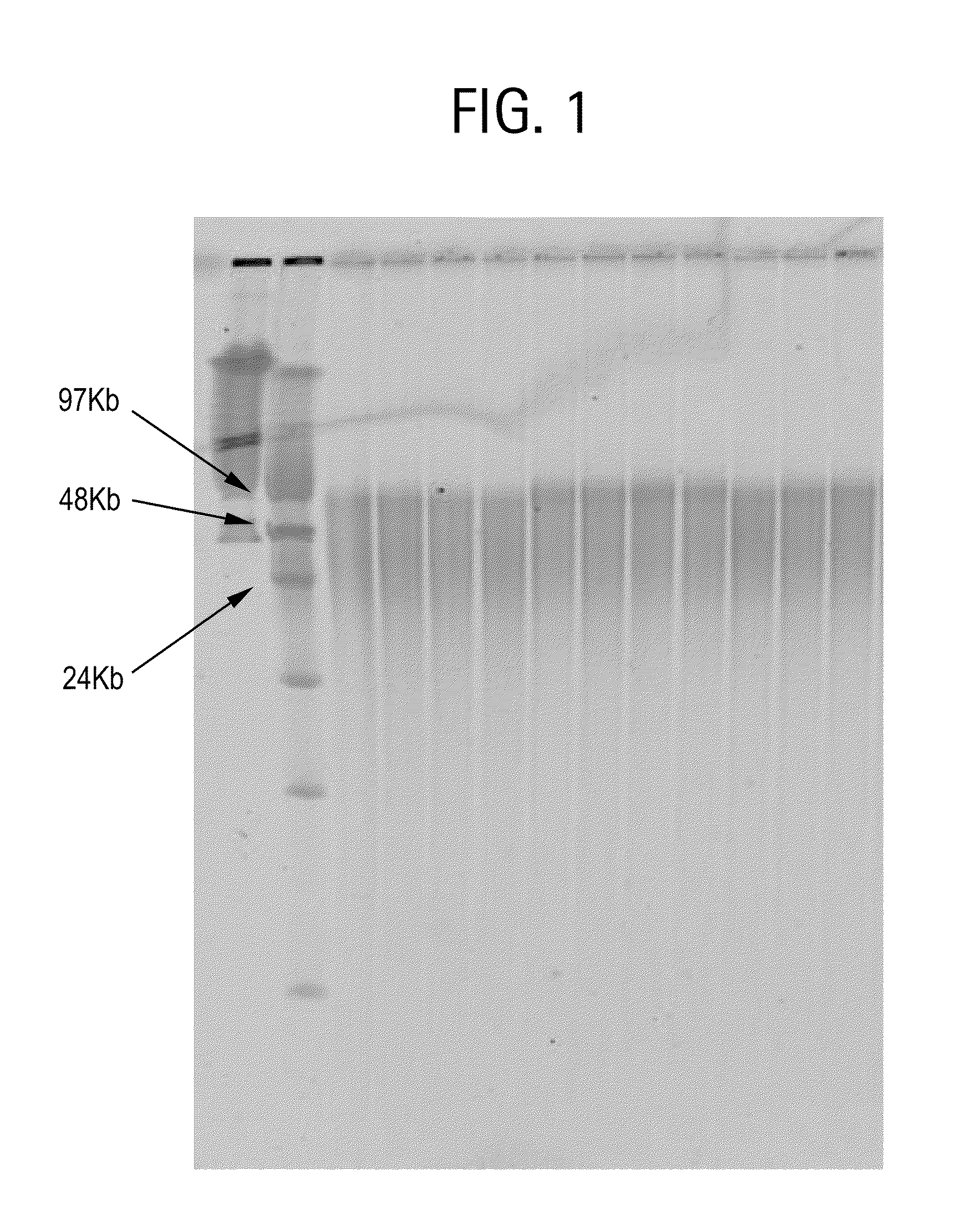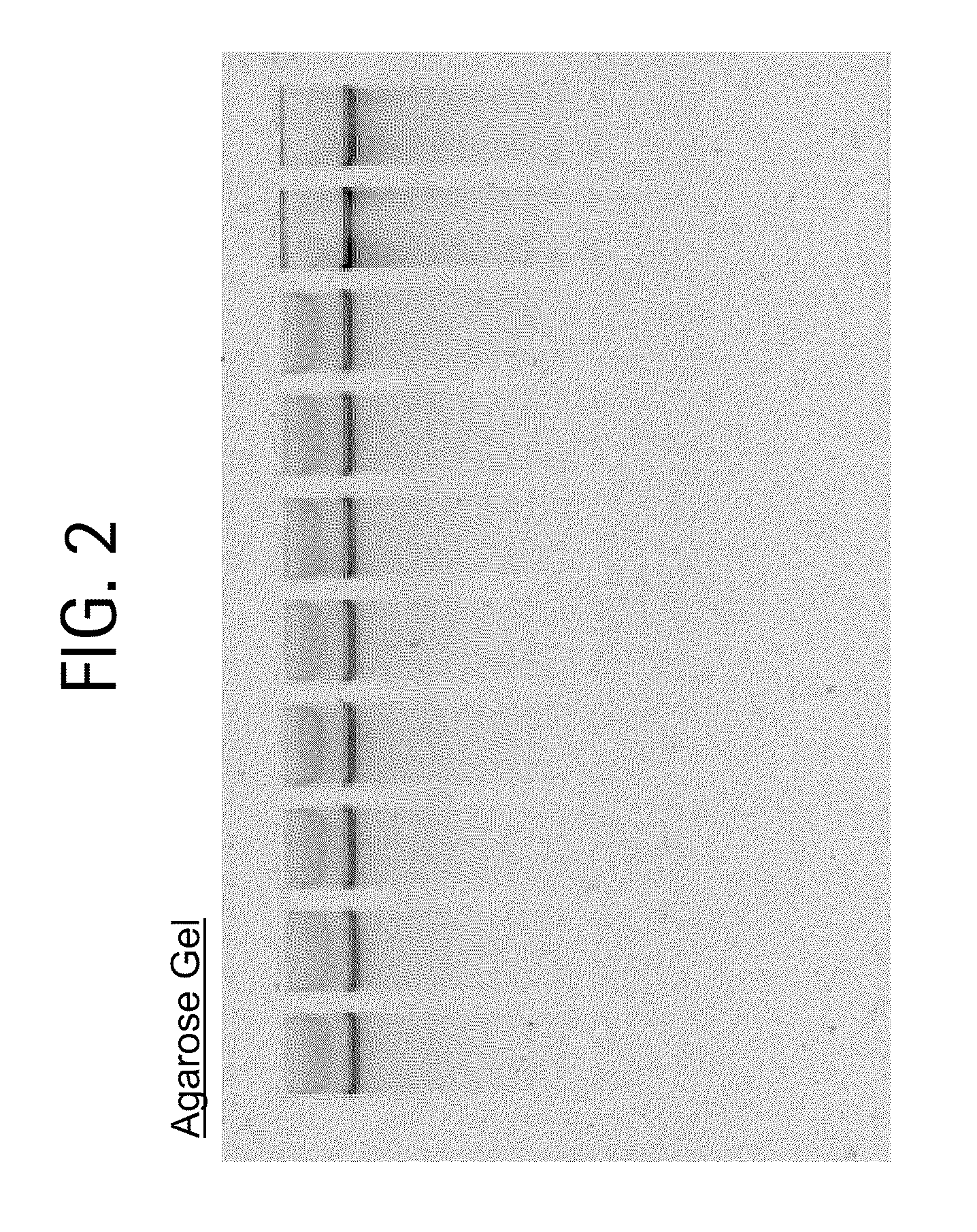Nucleic acid purification method
a technology of nucleic acid and purification method, which is applied in the field of nucleic acid purification method, can solve the problems of irreversible denaturation of nucleic acids, interference with many downstream manipulations, and degradation over time,
- Summary
- Abstract
- Description
- Claims
- Application Information
AI Technical Summary
Benefits of technology
Problems solved by technology
Method used
Image
Examples
Embodiment Construction
[0034]The following examples serve to illustrate the DNA purification processes according to embodiments of the present invention and are not intended to be limiting.
(A) Protocols Used in the Examples
(a) Isolation of Genomic DNA from Blood
[0035]Genomic DNA isolation from blood is done in 2 steps. The first step is the lysis of blood and the second step is purification of genomic DNA using ion-exchange column chromatography.
[0036]Lysis: This process involved 2 steps. First white blood cells are isolated and then the isolated white blood cells are lysed using lysis solution. The protocol used for the isolation of white blood cells and lysis of white blood cells is as follows. Five ml of blood is used as an example here. However, the protocol can be adjusted accordingly based on the amount of blood used.
1. Add 5 ml of whole blood to a 50 ml conical centrifuge tube.
2. Add 5 ml of pre-chilled Lysis1 solution and 15 ml of chilled water to the sample. Place the tubes in a rack and mix well...
PUM
| Property | Measurement | Unit |
|---|---|---|
| pH | aaaaa | aaaaa |
| pH | aaaaa | aaaaa |
| pH | aaaaa | aaaaa |
Abstract
Description
Claims
Application Information
 Login to View More
Login to View More - R&D
- Intellectual Property
- Life Sciences
- Materials
- Tech Scout
- Unparalleled Data Quality
- Higher Quality Content
- 60% Fewer Hallucinations
Browse by: Latest US Patents, China's latest patents, Technical Efficacy Thesaurus, Application Domain, Technology Topic, Popular Technical Reports.
© 2025 PatSnap. All rights reserved.Legal|Privacy policy|Modern Slavery Act Transparency Statement|Sitemap|About US| Contact US: help@patsnap.com



